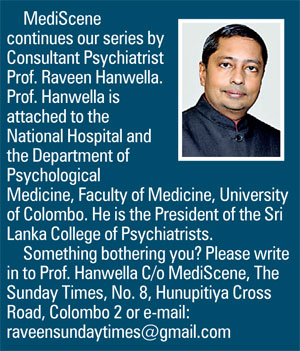A little mindfulness meditation can go a long way
The Buddha
The modern Blu-ray disc has a host of special features most of which you might never use. One such feature is the Director’s Commentary where the movie director explains every scene in the movie. It is initially interesting but becomes tedious after a while, and I doubt anybody would ever watch an entire movie with this feature on. Let’s say you have got a defective disk stuck in this mode and you can’t turn it off, I sure you would give up watching the movie in frustration. Our minds are sometimes or even most of the time this faulty Blu-ray disc with irrelevant thoughts swirling through. Would it not be great if we could turn such thoughts off at will? Mindfulness meditation holds that promise.

Jon Kabat-Zinn
Try a little exercise. Sit quietly for five minutes or even one minute. Quietly note each thought as it arises in your mind. Do not attempt to stop or alter your thoughts in any way. Simply observe. You will be surprised by the variety of thoughts that flit through your brain. Maybe one moment you are thinking of that unpleasant interview which you had with your boss and the next, you might be thinking of what you might eat for dinner. I would bet that the majority of your thoughts were about the past or the future and little on the present.
Mindfulness meditation is in fashion these days.If you Google mindfulness you find 1.4 million references and on YouTube, there are 1.7 million videos. Mindfulness meditation is advocated as a therapy for more or less every mental health problem ranging from stress, anxiety, depression through to more serious conditions such as psychoses. What is the truth?
Mindfulness has its origins in the Buddhist tradition, but a secular form of mindfulness meditation originated in the West through the work of Jon Kabat-Zinn, a former MIT molecular biologist. In 1979 he pioneered an eight-week stress reduction course based on mindfulness for patients with chronic pain in the University of Massachusetts Medical School. His course incorporated the fundamentals of mindfulness meditation as taught by the Buddha but without the religious aspects.
Kabat Zinn defines mindfulness as “Awareness that arises through paying attention, on purpose, in the present moment, non-judgementally.” In other words, mindfulness is paying attention in the present to your thoughts in a non-judgmental manner.
Mindfulness meditation has generated an explosion of articles and research papers. The UK National Health Service has now recognised a mindfulness-based therapy for the prevention of relapse in depression. In psychiatry, we have a form of psychotherapy called cognitive therapy that intends to change the way we think about events. But the mindfulness-based inventions aim not to alter our way of thinking but the way we think about our thought. Essentially you are expected to cease believing that your thoughts are necessarily true or important. This is where it links with Buddhist philosophy that our thoughts are merely events for which no action is necessary, only awareness.
 I admit that I am still uncertain of the benefits of mindfulness meditation as a therapy for mental illness. To me it sounds too simplistic and impossible that such a simple practice could bring about such profound change even in people with mental illness. My introduction to the subject was when I read a book by Dan Harris,a correspondent for ABC News and an anchor for Nightline. His 2014 book 10% Happier: How I Tamed the Voice in My Head, Reduced Stress Without Losing My Edge, and Found Self-Help That Really Works – a True Story describes how he found meditation helpful in controlling his anxiety after he developed a panic attack while on air. In a later book Meditation for Fidgety Skeptics,he describes how a busy professional can incorporate mindfulness meditation into their tight work schedules.
I admit that I am still uncertain of the benefits of mindfulness meditation as a therapy for mental illness. To me it sounds too simplistic and impossible that such a simple practice could bring about such profound change even in people with mental illness. My introduction to the subject was when I read a book by Dan Harris,a correspondent for ABC News and an anchor for Nightline. His 2014 book 10% Happier: How I Tamed the Voice in My Head, Reduced Stress Without Losing My Edge, and Found Self-Help That Really Works – a True Story describes how he found meditation helpful in controlling his anxiety after he developed a panic attack while on air. In a later book Meditation for Fidgety Skeptics,he describes how a busy professional can incorporate mindfulness meditation into their tight work schedules.
Mindfulness meditation has its critics. Miguel Farias and Catherine Wikholm, two psychologists, the authors of the book The Buddha Pill having analysed the evidence say that most of the cited studies lack scientific rigour and their conclusions are not definitive. They also caution that mindfulness is not a cure-all and warn that meditation can under certain circumstances adversely affect our minds. To quote Catherine Wilkhom, “the fact that meditation was primarily designed not to make us happier, but to destroy our sense of individual self – who we feel and think we are most of the time – is often overlooked in the science and media stories about it.”
There are several case reports of persons engaging in meditation who have developed “meditation-induced” psychosis, mania, depersonalisation, anxiety, panic and re-experiencing of traumatic memories. Kabat-Zinn, the founder of mindfulness meditation counters that such incidents are rare and mostly relate to intensive retreats rather than the routine courses where meditators practise for perhaps half an hour a day. I too have come across patients who developed a serious mental breakdown after intensive meditation. However, if practised in moderation and in a sensible manner, mindfulness meditation is unlikely to do harm and may even bring significant mental health benefits.
For people who are interested in mindfulness meditation here is a short basic meditation to try out. I would recommend just one minute for a start. The environment is important so choose a time and place where you won’t be disturbed. Switch off your phone but a timer is useful. You may close your eyes but it is not compulsory. You can lie down or sit with your feet flat on the ground and hands resting comfortably on your thighs. You don’t have to try anything exotic. Inhale and exhale counting from 1 to 10 for each exhalation and cycle back to 1. Continue till your meditation time is up. Keep your attention on your breath but don’t try to control it. Just notice the sensation of breathing. Initially numerous irrelevant thoughts will come to your mind but do not engage with your thoughts but simply note and allow them to pass. Bring your attention back to your breathing. Once you are done, stretch and relax or lie a few moments quietly. Repeat this practice daily. Don’t aim for hours of meditation, just one minute a day which you can later extend.
Congratulations! You have just completed your first mindfulness meditation. Keep practising and who know what benefits it may bring you.


